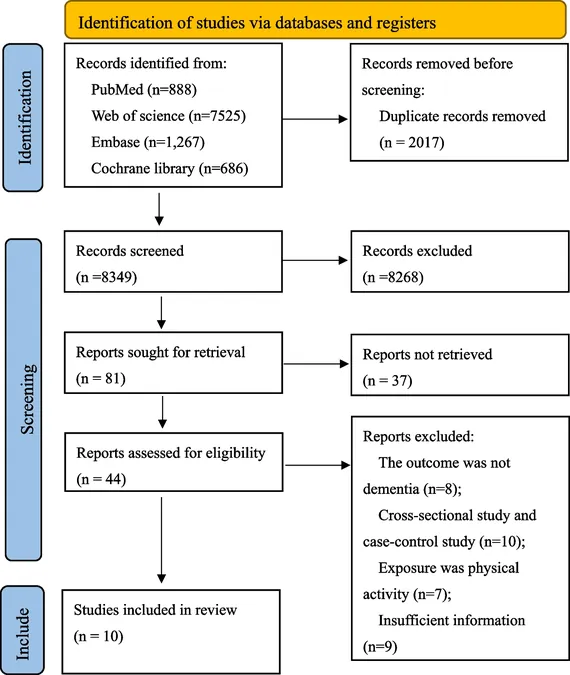
Unlocking the Link Between Sedentary Lifestyles and Dementia: What You Need to Know!
2025-05-05
Author: Jia
The Alarming Connection Between Sedentary Behavior and Dementia
A critical new study has revealed a shocking connection between sedentary behavior and dementia in adults. With the prevalence of dementia projected to soar—from 55 million cases in 2019 to an estimated 139 million by 2050, according to the World Health Organization—understanding this link is more vital than ever.
What the Research Found
This extensive review analyzed ten cohort studies, nine of which met high-quality standards. The findings were startling: individuals who spent significant time being sedentary were at a 17% increased risk of developing dementia. Even more concerning, those who watched a lot of TV faced a staggering 31% increase in dementia risk. However, not all sedentary activities carried the same weight—high computer usage did not show a significant correlation with dementia risk.
Why Does Sedentary Behavior Matter?
Sedentary behavior (SB) is generally defined as activities sitting or reclining that expend 1.5 metabolic equivalents or less—think binge-watching TV, scrolling social media, or even long car rides. While physical activity is known to combat dementia onset, SB has recently emerged as a formidable risk factor. Previous studies showed that even if one exercises regularly, long hours of inactivity could still endanger cognitive health.
Unpacking the Analysis
The reviewed studies involved more than 3.2 million participants across the UK and Japan, ranging from 3.4 to 13.6 years of follow-up. The quality of these studies was robust, with nine stories rated highly on the Newcastle–Ottawa Scale. The research employed hazard ratios (HRs) to precisely measure the risk of dementia based on different forms of SB.
Cognitive Health Risks: What Activities Are to Blame?
The analysis distinguished between types of sedentary activities. Watching TV was linked with a significantly higher risk of dementia, while spending time on computers showed no significant risk, suggesting that the type of activity during sedentary time matters. Engaging in active cognitive tasks may protect brain health compared to passive activities like TV viewing.
Addressing the Implications
The findings are clear: reducing time spent on cognitively passive activities while promoting those that engage the brain could be key in diminishing dementia risk. This could transform approaches to dementia prevention in clinical and public health settings, opening doors for effective health education and intervention strategies.
A Call to Action!
As society shifts towards more sedentary lifestyles, this study highlights an urgent need for awareness and action. Those concerned about dementia risk should reconsider their activities and aim for a balance that incorporates brain-engaging tasks alongside regular physical activity. Future research must continue to explore the extent of these associations globally.
The Road Ahead for Dementia Research
Although this study adds significant knowledge to our understanding of dementia, limitations persist, including a potential bias due to reliance on self-reported data and the focus mainly on European populations. Further investigations are crucial to unravel the intricate connections between sedentary behavior and dementia across diverse demographics.
By raising awareness and adjusting our lifestyles, we can make strides in the fight against this debilitating condition, ensuring not only a healthier brain but a more vibrant future for everyone.



 Brasil (PT)
Brasil (PT)
 Canada (EN)
Canada (EN)
 Chile (ES)
Chile (ES)
 Česko (CS)
Česko (CS)
 대한민국 (KO)
대한민국 (KO)
 España (ES)
España (ES)
 France (FR)
France (FR)
 Hong Kong (EN)
Hong Kong (EN)
 Italia (IT)
Italia (IT)
 日本 (JA)
日本 (JA)
 Magyarország (HU)
Magyarország (HU)
 Norge (NO)
Norge (NO)
 Polska (PL)
Polska (PL)
 Schweiz (DE)
Schweiz (DE)
 Singapore (EN)
Singapore (EN)
 Sverige (SV)
Sverige (SV)
 Suomi (FI)
Suomi (FI)
 Türkiye (TR)
Türkiye (TR)
 الإمارات العربية المتحدة (AR)
الإمارات العربية المتحدة (AR)